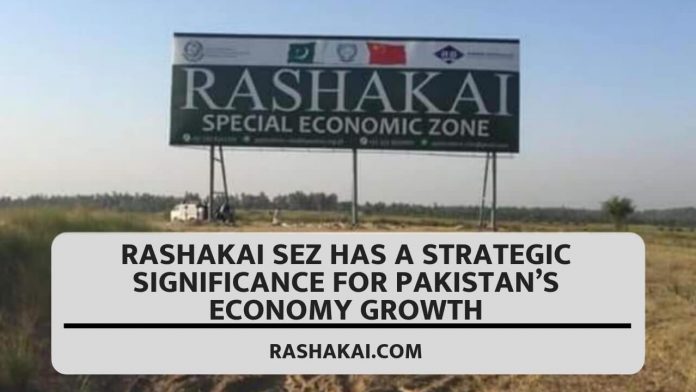ISLAMABAD: Different special economic zones (SEZs) are being established across Pakistan and several others are in the pipeline under China-Pakistan Economic Corridor to boost industrialisation, exports and generate employment.
Experts suggest Pakistan’s economic growth is heavily reliant on exports. This is due to the fact that the access to foreign exchange allows the country to fund its imports, stop erosion of its currency value, repay debts, and address the balance of payment issue.
Solution to these problems is massive industrialisation and diversifying the export base.
For this to happen, the government is implementing its “Made in Pakistan” agenda to stimulate import substitution. The policy’s goals are to create jobs, boost value-added exports, and stimulate import substitution.
The government is working on different strategies. The objective behind “Made in Pakistan” motto is to produce goods and services in the country rather than importing those that disturbs the country’s trade balance.
For this purpose, the government has adopted the concept of SEZs. These SEZs are planned to be built in different locations to operationalise industries, to solve global competitiveness issues, and to develop industrial clusters in the economy.
SEZs are intended to encourage domestic and international investors to promote and build industrial infrastructures that focus on export promotion, import substitution, technology transfer, and job creation.
As of May 2021, the 21 notified SEZs account for about 10,029 acres of industrial land, of which 5,220 acres (52%) have been allotted to investors for establishment of industry with anticipated investments of over Rs633 billion, of which 43.6% is Foreign Direct Investment of $1.73 billion.
It’s worth noting here that under SEZ Act 2012, a zone enterprise is required to begin building within six months of approval and to begin commercial production/operations within 24 months, although title to land is only granted after six months of regular operations.
There are nine SEZs planned to develop in Pakistan, and the development of some has already started. The first SEZ is being developed in Nowshera – the Rashakai Special Economic Zone consists of around 1,000 acres of land. On completion, it is expected to generate around 500,000 jobs. The second, Dhabeji Special Economic Zone, consists of 4,530 acres of land and it’s going to be the biggest economic zone in Pakistan. It is expected to create 500,000 jobs.
While establishing SEZs, Pakistan can follow the example of China. The first Special Economic Zone was established in China in 1980. In recent years, according to statistics, China’s national SEZs have contributed around 22% of GDP, 45% of the national foreign direct investments and around 60% of exports.
China’s SEZs are thought to have provided more than 30 million jobs, raised participating farmers’ income by 30%, and hastened industrialisation, agricultural modernisation, and urbanisation.
Foreign investors have also made investments in China’s Special Economic Zones as they were highly satisfied with the Chinese business policies, incentives, and security provided to them.
With CPEC entering the most crucial second phase of implementation, establishing economic zones across the country, Pakistan is all set to see massive inflow of foreign direct investment, job creation, boost in exports and stabilisation of the external sector.























